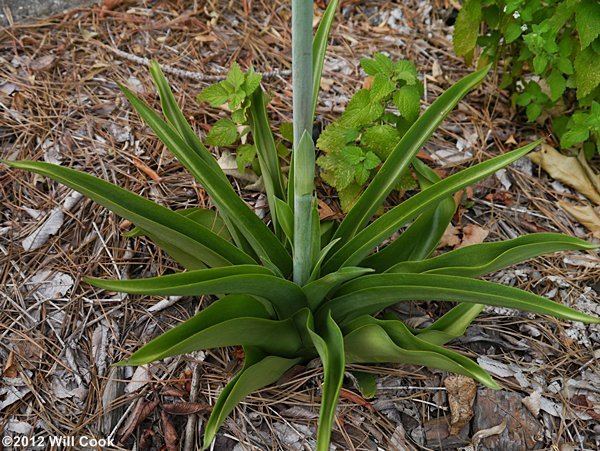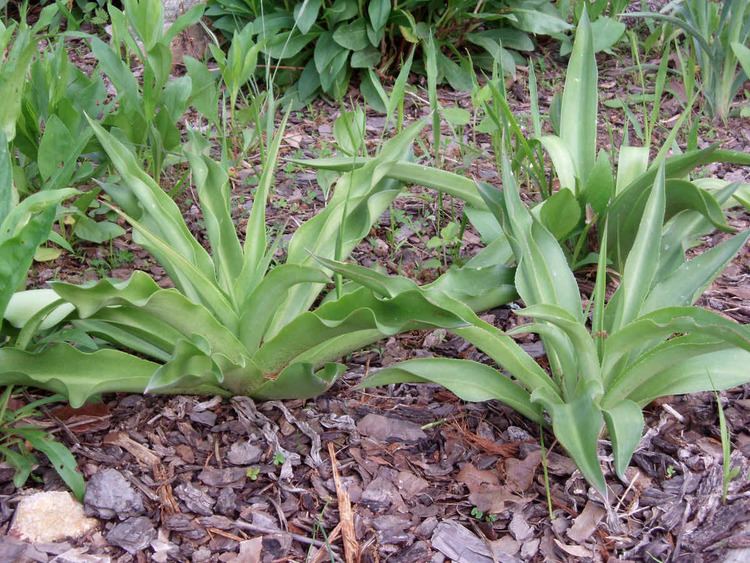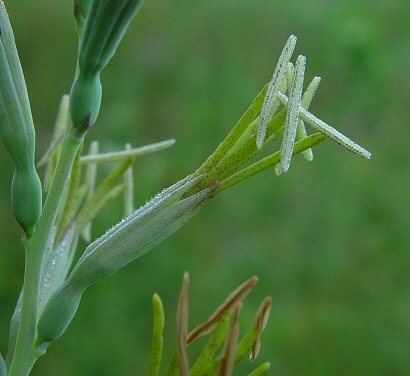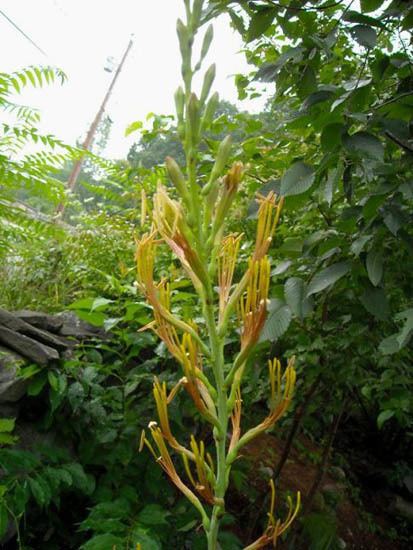Kingdom Plantae Clade Monocots Subfamily Agavoideae Rank Species | Clade Angiosperms Family Asparagaceae Genus Manfreda Order Asparagales | |
 | ||
Similar Manfreda, Agave virginica, Manfreda maculosa, Manfreda scabra, Eryngium yuccifolium | ||
Manfreda virginica, commonly known as the false aloe, rattlesnake master, and Virginia agave, is a species of flowering plant related to agaves. It is native to an area stretching from North Carolina west to Texas in the United States and south to Nuevo León and Tamaulipas in Mexico.
Contents

Description

False aloe is acaulescent, meaning the stem is extremely short. Leaves and flowering stems are from a bulbous herbaceous caudex. The fleshy green leaves are usually spotted or speckled with maroon. Sufficient precipitation yields an inflorescence up to 68 cm (27 in) tall in the period from early summer to late summer, rarely in the spring.

The inflorescences bears 10–61 closely spaced flowers. Flowers are sessile or pedicellate, nearly erect, slender, with a fragrant sweet fruity odor. Seed capsules are globose and 1–1.7 cm diameter.

Leaf shape and size in Manfreda virginica vary with soil type, amount of shade, length of cold period, and position of leaf in the rosette. Speckles and spots occur frequently on some leaves in most populations, and some authors have used the informal designation “forma tigrina” for such variants.
Ecology
Manfreda virginica is adapted primarily to nocturnal pollination by medium-sized moths and larger sphinx moths. Diurnal pollination by large bees results in significantly less seed set than nocturnal and open pollination. Hummingbirds are also attracted to the blooms.
